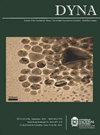RAPID OPTIMIZATION OF DISINFECTANTS BY PHOTOGRAPHIC IMAGE-BASED ANALYSIS AND DESIGN OF EXPERIMENTS
Q3 Engineering
引用次数: 0
Abstract
The current pandemic of coronavirus disease 2019 (COVID-19) introduced the need for the development and optimization of new alcohol-water based disinfectant formulations. Moreover, the limited supply chain of traditional active ingredients such as ethanol (EtOH) has excessively increased the base formula cost, thus, novel platforms are needed to design new strategies for disinfectant development. In this work, we devise a novel quantification method of disinfectant turbidity and foam thickness based on photographic image analysis of disinfectant to optimize formula preparation, which improves critical physicochemical parameters related to colloidal stability. Next, the numerical data obtained from the pixel photograph's values were ordered by applying a 24 factorial design, considering each disinfectant ingredient, followed by an analysis of variance (ANOVA) and counter with contour and surface plots, respectively. Furthermore, our novel method was validated using a linear regression test, consequently outlining the method's error value. Our results suggest that the photographic image analysis supported by the statistical model correlated satisfactorily with the real physicochemical behavior of disinfectant, showing that the EtOH-H2O system plays a crucial role in turbidity and foam height control. In addition, we predicted by Minitab Optimizer Tool the physicochemical and aesthetic conditions of the disinfectant, having an error of 5%. Our current approach opens up a novel path to incorporate novel active ingredients for a rapid formulation and potentially scalable method to fabricate disinfectants. Keywords: image analysis, factorial design, disinfectant, foaming, active ingredients, optimization基于摄影图像分析和实验设计的消毒剂快速优化
当前的2019冠状病毒病(COVID-19)大流行提出了开发和优化新型醇水基消毒剂配方的必要性。此外,乙醇(EtOH)等传统活性成分的有限供应链过度增加了基础配方成本,因此需要新的平台来设计新的消毒剂开发策略。本文设计了一种基于消毒液摄影图像分析的消毒液浊度和泡沫厚度定量方法,以优化配方制备,提高与胶体稳定性相关的关键理化参数。接下来,通过应用24因子设计(考虑每种消毒剂成分)对从像素照片值中获得的数值数据进行排序,然后分别使用等高线和曲面图进行方差分析(ANOVA)和计数器分析。此外,我们的新方法使用线性回归测试进行了验证,从而概述了方法的误差值。我们的研究结果表明,统计模型支持的摄影图像分析与消毒剂的真实理化行为有很好的相关性,表明EtOH-H2O体系在浊度和泡沫高度控制中起着至关重要的作用。此外,我们用Minitab优化工具对消毒液的理化和美观条件进行了预测,误差为5%。我们目前的方法开辟了一条新的途径,将新的活性成分用于快速配方和潜在的可扩展方法来制造消毒剂。关键词:图像分析,析因设计,消毒液,起泡,有效成分,优化
本文章由计算机程序翻译,如有差异,请以英文原文为准。
求助全文
约1分钟内获得全文
求助全文
来源期刊

Dyna-Colombia
工程技术-工程:综合
CiteScore
1.30
自引率
0.00%
发文量
0
审稿时长
4-8 weeks
期刊介绍:
The DYNA journal, consistent with the aim of disseminating research in engineering, covers all disciplines within the large area of Engineering and Technology (OECD), through research articles, case studies and review articles resulting from work of national and international researchers.
 求助内容:
求助内容: 应助结果提醒方式:
应助结果提醒方式:


